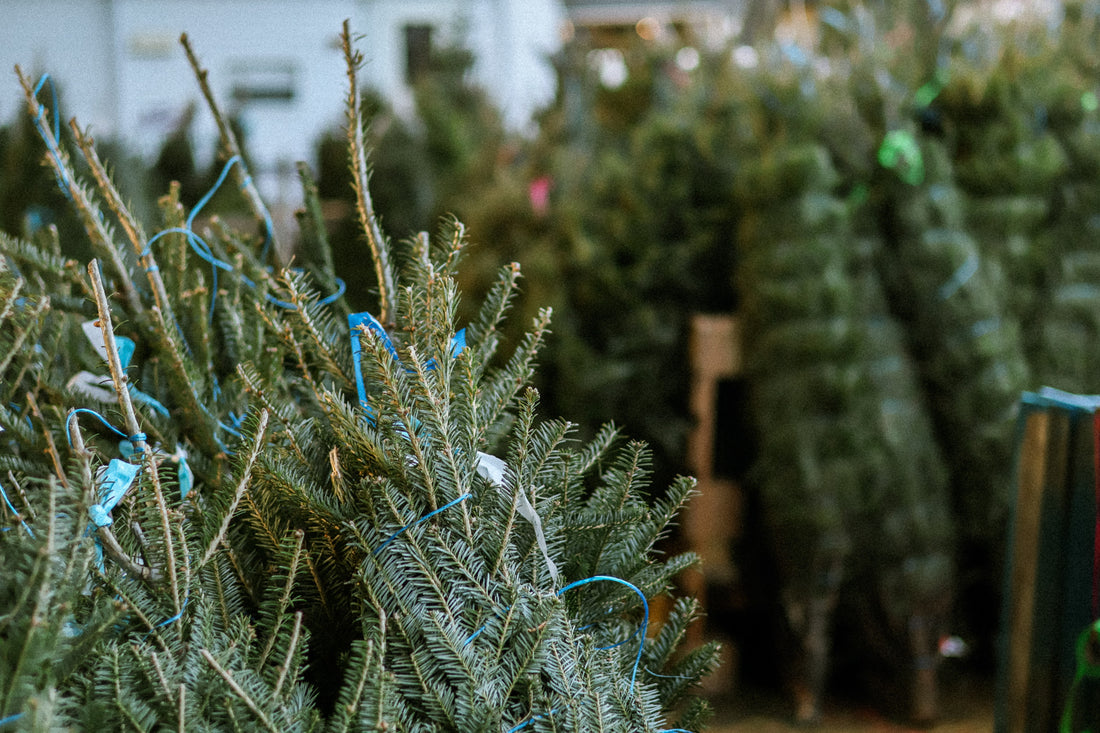
The Environmental Benefits of a Real Christmas Tree: Why Choosing a Natural Tree is More Eco-Friendly
Share
Every holiday season, the same question arises: should you go for a real Christmas tree or an artificial one? While the practical side of things often comes to mind first, it’s just as important to consider the environmental impact of our choice. In fact, natural trees offer several ecological benefits compared to artificial ones. Here’s why choosing a natural tree is a more eco-friendly way to celebrate the holidays.
1. Sustainable Farming Practices
Natural Christmas trees are grown responsibly on local farms, often following sustainable farming practices. These trees are specifically planted for the holiday season and are replaced with new saplings after each harvest. Contrary to popular belief, cutting down a Christmas tree doesn’t contribute to deforestation, as these trees are part of a continuous cycle from planting to harvesting.
2. A Natural Carbon Filter
During their growth, Christmas trees absorb carbon dioxide (CO₂), a greenhouse gas, and release oxygen. An acre of Christmas trees can produce enough oxygen daily for over 20 people. Even on a small scale, this CO₂ absorption helps to reduce the carbon footprint and combat climate change.
3. Supporting Local Biodiversity
Christmas tree farms also support local biodiversity. They provide habitats for various wildlife, including birds and small mammals, while preserving soil, preventing erosion, and enriching nearby ecosystems. By choosing a natural tree, you’re contributing to a healthier environment and supporting local biodiversity.
4. 100% Compostable and Recyclable
Unlike artificial trees made from plastic and metal, a natural Christmas tree is completely biodegradable. After the holidays, it can be composted, turned into garden mulch, or even recycled by certain municipalities. These practices help avoid plastic waste, as an artificial tree, once damaged, often ends up in the landfill, taking hundreds of years to break down.
5. Lower Emissions Compared to Artificial Tree Production and Transport
Artificial trees are primarily made in Asia using PVC and metals, and their production generates greenhouse gas emissions and industrial waste. Transporting them to North America adds a significant carbon footprint. By opting for a locally grown natural tree, you reduce the pollution associated with the manufacturing and shipping of artificial trees.
6. Supporting the Local Economy
Choosing a natural tree also means supporting local farms and businesses. These farms play a vital role in the regional economy, creating seasonal jobs that benefit the community.
In Summary
Opting for a natural Christmas tree is an eco-friendly choice that allows us to keep the holiday spirit alive while respecting the environment. Besides being a compostable and local alternative, a natural tree helps to preserve the air we breathe and enriches the surrounding ecosystems. For those looking to celebrate Christmas with a greener mindset, a natural tree is an excellent choice, combining beauty, tradition, and environmental respect.
Luigi Bono
Co-owner
luigi@sapinchezmichel.com
